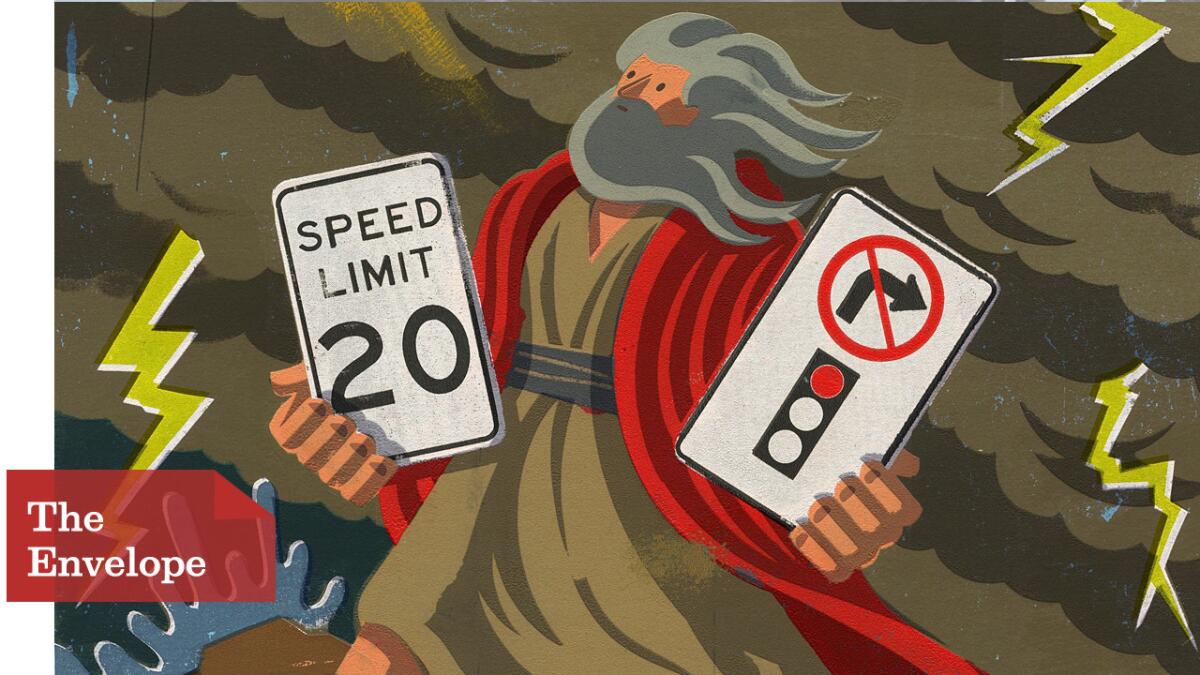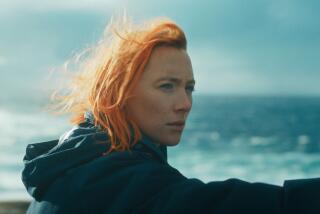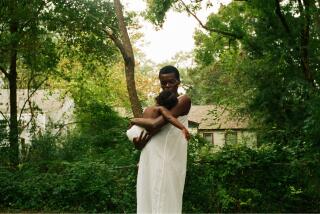The Envelope: ‘Exodus,’ ‘Unbroken,’ ‘Wild’ take the road-trip movie on new paths

- Share via
Ridley Scott’s new movie, “Exodus,” may be many things, but a road movie might not be the first thing that comes to mind. Yet the biblical tale about a man looking for his god who helps a people flee enslavement is in many ways the original road story.
“Isn’t almost every drama a road trip in effect?” asks Scott. “Even if you’re not literally feet in the dust or on concrete. Epics largely come down to being road trips, metaphorical and physical journeys.”
Road trips are classic settings for storytellers and frequently embraced by filmmakers. And why not? They’re a chance to delve deep into character (a lone wolf or a small group that bands together for a shared journey) while showcasing breathtaking vistas (hello, “Lawrence of Arabia” and the crossing of the Sun’s Anvil).
So it’s no surprise that this Oscar season there are plenty to go around, in whole or in part, from Reese Witherspoon hiking 1,100 miles of the Pacific Crest Trail in “Wild” to the lost-at-sea wanderings in a portion of “Unbroken” to the doomed settlers of “The Homesman.” In all of those films, the heart of the movie is the journey, the destination being of lesser consequence.
“It’s a dramatization of the ticking clock,” says Kieran Fitzpatrick, who co-wrote “The Homesman” with director-star Tommy Lee Jones and Wesley A. Oliver. “You have a starting point, an ending point and an automatic expectation built into the drama. And it’s very much in line with the type of underlying mythology people respond to: You start somewhere, are lost and have to find yourself.”
There’s also something very American about a road movie, he adds. “In the U.S., you transverse five different climates and topology, and that’s unique. Historically, we did this journey only recently. If Europe had just been conquered, maybe road stories would have a greater appeal [there].”
In the case of “Wild,” the stripped-down nature of author Cheryl Strayed’s journey came with particular storytelling advantages, recalls director Jean-Marc Vallée, who says Witherspoon plays both protagonist and antagonist in the tale.
“Normally, you follow a character and there are obstacles to his goals — fighting against hostiles or the system — but in the wild there’s no such thing. This is just a girl on a hike, and when you cut through her life and get to know her, you realize she’s the villain: She’s confronting her own demons and her past.”
Yet making a road picture comes with some very practical concerns beyond the metaphysical journey. Vallée had to first decide on the direction Witherspoon would face in the film, then how wide he wanted his shots to be. Wide meant he’d get awesome views of the mountains and desert, but he stuck with keeping things close to his lead’s face to make the most of her often silent, interior journey.
And, he adds, there was the problem with making sure the scenes looked different from one another: “Sixty-five percent of the film is a girl on a trail, so I have to ask myself, how am I going to shoot this and not repeat myself?”
Meanwhile, Scott kept his on-the-road sections of “Exodus” as succinct as possible. “I find you can’t spend too much time on ‘shoe leather,’” he says. “I used to do a lot of shoe leather work in my films and was told to keep that down — there’s a bum-ache factor in theaters. You have to move on with the story.”
“Unbroken” had no worries about literal shoe leather — the film’s three characters are left floating in a raft on the Pacific Ocean after their plane crashes and are at the mercy of the open ocean rather than a road for 47 days — but that brought technical issues of its own.
“‘Jaws’ is one of my favorite movies, and I never understood what an amazing accomplishment that movie was until I was watching shooting on the water for myself,” says producer Matthew Baer. “Shooting at sea delivers what actors and cinematographers hate the most: being out of control.”
That loss of control may be part of the fascination with the road picture; the streamlined story is undoubtedly the other.
“The hero’s journey is the ultimate form of storytelling,” says Baer. “Everybody can connect with the turns that life takes us on, can relate to an individual’s challenge in seeking happiness, growth and the ability to go home. That’s the unifying theme in the hero’s journey, that desire to make it home safely.”
More to Read
Sign up for The Envelope
Get exclusive awards season news, in-depth interviews and columnist Glenn Whipp’s must-read analysis straight to your inbox.
You may occasionally receive promotional content from the Los Angeles Times.










